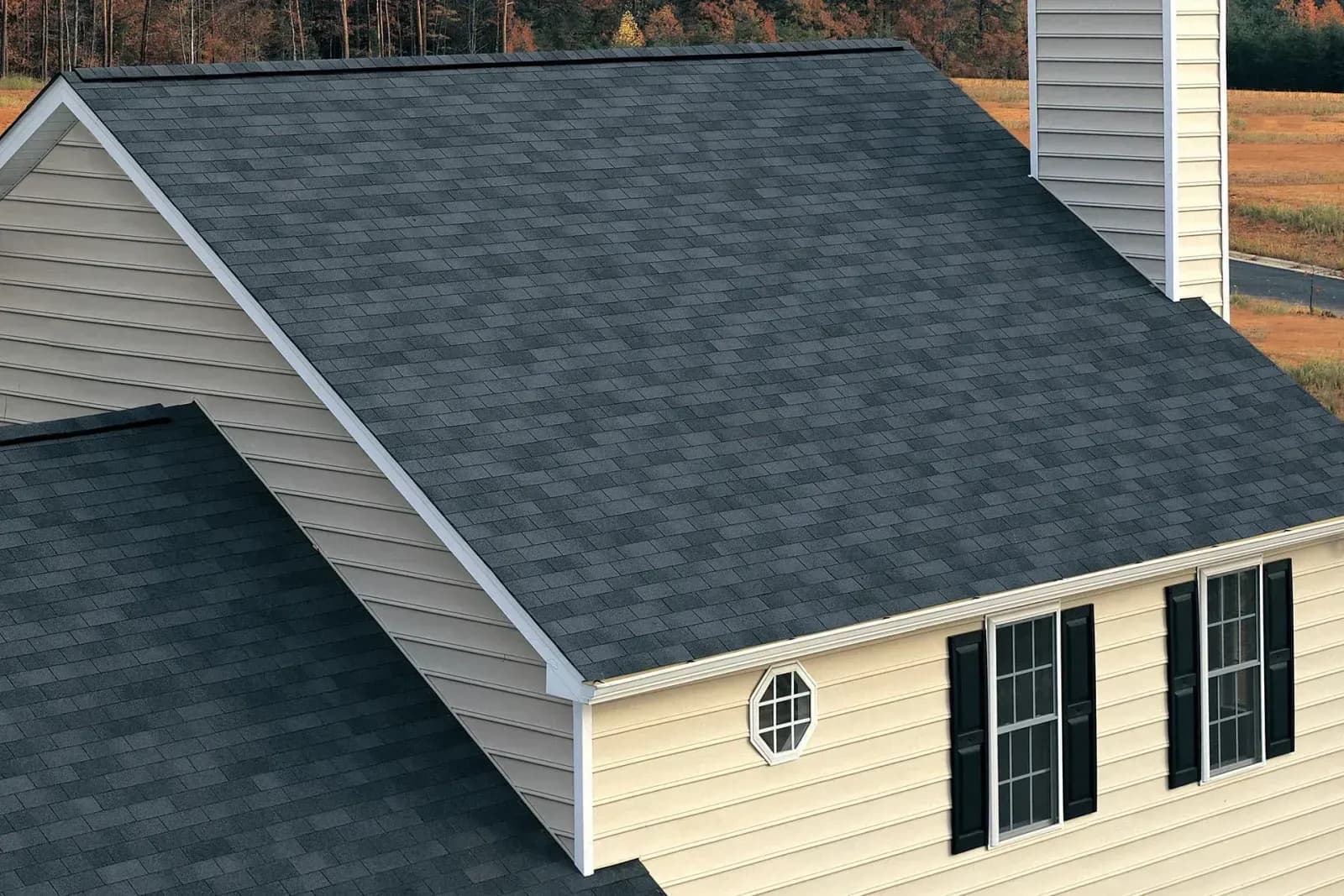
Why Roof Vents And Attic Ventilation Are So Important To Protecting Your Home's Roof
If your rooms upstairs are hot during the sunny seasons, perhaps you think it is due to the temperature outside. So, you go about your day with your air conditioner working overtime to cool it down.
You might not be aware that roof ventilation could cause high temperatures.
While your upstairs being hot is not fun, there could be more to it, and you should ensure that your roof or attic isn't poorly ventilated.
Additionally, the cold air in the winter mixing with the hot air in your house can also cause major problems.
The goal is to have a properly ventilated roof so that the outside temperature, whether it's 40C or 40C, is the same as the temperature inside your attic.
Poor roof ventilation can also cause expensive roof issues, which you might not know about until it is too late. That is why it is vital to understand how your roof ventilation system affects your home and your roof.
Many homeowners don't know this is an issue until a roofing expert points it out. As we want you to be as well versed and educated as possible regarding roof ventilation, we will break it down in this article.
What is Attic Ventilation?
A great attic and roof ventilation system have numerous benefits. For starters, it will extend the life of your roof immensely. Who doesn't want that?
They will also help lower your home's energy bill and make your home a much healthier place to live.
There are two main styles of roof vents that have basic but essential tasks.
Exhaust Vents Out With The Old
Exhaust vents are tasked with removing the air from your attic into the outside world.
Hot air can linger in your attic and cause all kinds of problems. It's the hot air you want to remove; never have it stagnant in your attic. Since hot air contains a lot of moisture, it can lead to mould, mildew and bad smells if allowed to stagnant and get stale. This is one of the reasons proper roof vents and attic ventilation can avoid serious health problems, as we discussed earlier.
Since we know hot air rises, exhaust vents are generally placed towards the top of your roof line.
We'll discuss the most popular types of exhaust vents later in this article.
Intake Vents In With The New
Intake vents are tasked with bringing the outside fresh air into your home.
It's not just about fresh air coming in, though it is a nice touch. The outside air is cooler than the hot air hanging around your attic. We know hot air rises. The cooler air will come in through an intake vent and enter underneath the hot air, helping push it out through an exhaust vent.
The outside air comes in underneath the hot attic air because intake vents are placed lower on the roof line than the exhaust vents. This is how the whole systems work together to create a perfect ventilation system.
Both types of vents work together to play a critical role in properly ventilating your home and protecting both your roof and the inside of your house.
The Importance Of Having Proper Roofing Ventilation
Improving roof ventilation will assist in keeping your roof in prime condition. Poor roof and attic ventilation are one of the biggest leading causes of roof damage. It's not something you should overlook.
While the main point of attic ventilation is to protect your roof, there are also benefits to the inside of your home and daily life.
Improves Roof Lifespan
Not sufficiently ventilating your attic and roof can drastically lessen the roof's lifespan.
A roof that is not properly ventilated can cause very hot attics, in which the moisture builds up and sooner or later will cause damage to rafters, wood framing, underlayment, and more.
It will lead to rot of your roof sheathing, ultimately leading to repairs or needing a roof replacement sooner than you would have.
Avoid Rot, Mould, And Condensation
One vital aspect of proper roof ventilation is to avoid condensation that ultimately results in rot and mould.
Our homes make moisture. Showers, laundry, bathing, and cooking produce damp, warm air inside our living space. This moisture travels upward to the ceilings, and when proper ventilation isn't in place, it eventually lands in your attic.
When the hot air reaches a cool surface, it will condense, producing an unhealthy environment susceptible to mildew and mould growth.
Proper attic ventilation keeps insulation dry and puts condensation causing damages at bay.
Improves Energy Efficiency
Making sure you have proper roof ventilation assists in reducing the cooling costs of your home by enabling moisture to escape.
As the heat outside starts to rise, the heat inside our home rises too. If you don't have proper attic ventilation, the heat will be blocked inside the attic, which causes your air conditioning unit to function harder.
If you have proper ventilation, it can reduce AC cooling and operating expenses. Setting up a roof ventilation system is also an excellent way to boost energy efficiency in your home and save you money.
Prevents Ice Dams From Forming
Here in Ontario, we get harsh winters with a lot of snow. Having proper attic ventilation reduces the risk of experiencing harmful ice dams.
These are usually due to warm air reaching your roof deck, which leads to the snow on the roof melting.
The melted snow will run down the roof and refreeze in your eavestrough, backing up and creating ice dams.
How To Have Proper Roofing Ventilation
If you see any indications of poor attic ventilation, it is time to make changes to boost your roof's ventilation.
Roof ventilation is a simple task for professional roofers when replacing your roof, but it can also be taken care of without having to redo your whole roof.
There are lots of roof vents available out there to choose from.
Common Types Of Roof Vents
Now that you know what attic ventilation is and its importance let's cover the most common roof venting systems you'll come across.
Exhaust Vents
Ridge Vents
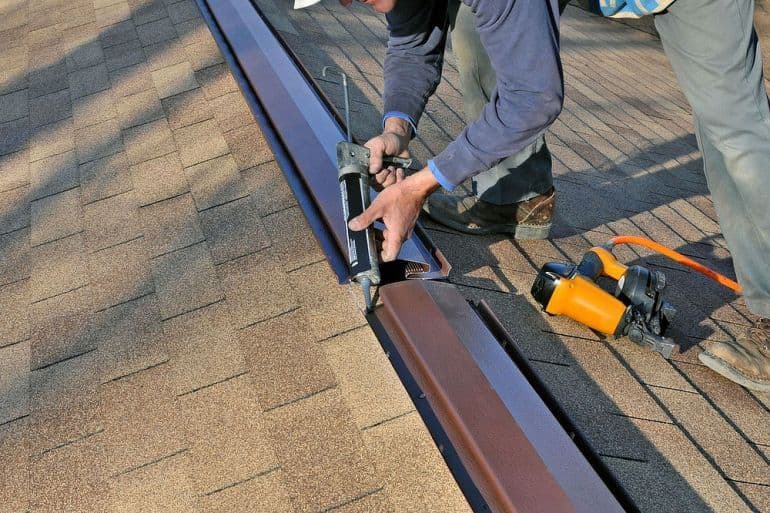
Ridge vents are set up at the top ridge of your roof across the whole peak of your roof line. They are the most popular type of installed exhaust vent.
Because ridge vents are installed at the very peak of your roof, they are in the best spot to let out hot air from your attic.
They blend seamlessly into your roof; you usually can't notice them from the ground.
Modern ridge vents are so strong and can easily support heavy snow. You won't have to worry about snow and ice blocking the exhaust due to how the ventilation holes are manufactured into them.
The ridge vents filters also protect from bugs, insects and other debris entering your attic space.
Turbines Vents aka Whirlybird Ventilation
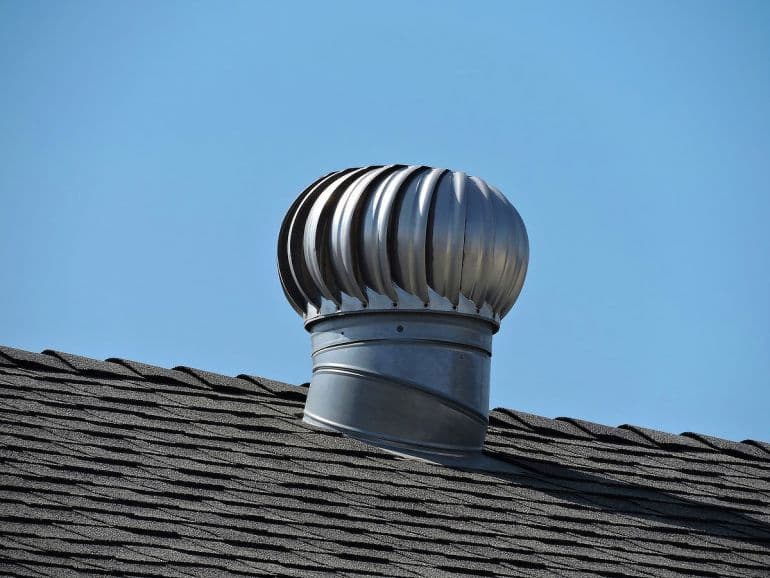
Turbine vents are circular aluminium vents with slates to rotate around in a 360 motion. This design works by using the convection method. The hot air inside your attic gets pulled up and out of your home.
They require a bit of wind to work most efficiently, but it doesn't take much to start it spinning. The wind would also have to be stopped for a longer period of time before the turbine vent stops rotating.
Even when not rotating, it can still let hot air escape from your attic.
They are designed to keep outside debris and insects from entering your attic.
A turbine vent is an excellent option because it can be installed almost anywhere your roof needs, even with a complex roof structure.
Box Vents
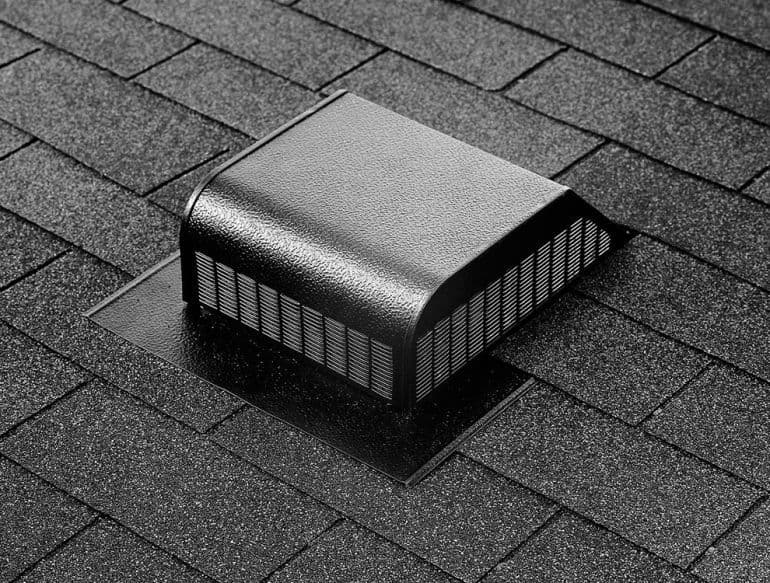
Just like the name suggests, these roof vents look like square boxes installed on top of your roof. They can be a great addition to adding extra ventilation to your roof or when you have a complicated roof structure.
They are simple in design and let hot air escape from your attic.
They're usually installed in rows spaced across an area of your roof. They come in different sizes, but one of the most common sizes is 18 x 18 inches.
They're also one of the cheapest roof vent options but not the most powerful.
Powered Attic Vents

Power vents are another circle shaped vent that runs on electricity. They are placed near the top ridge of your roof and pull hot air out of your attic.
The downside to these types of roof vents is that they come with a higher energy bill, and the motors do tend to fail during their lifespan, so you'll have to be prepared to replace them.
Because of the energy use, in recent times, we've seen a big transition to solar powered vents.
Gable Vents
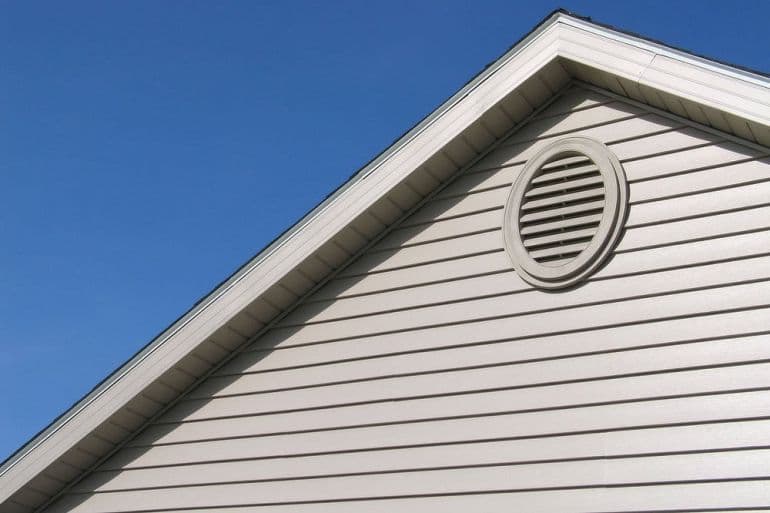
These vents are similar to the windows in the attic that you may have seen. However, they aren't the same.
A gable vent is installed just like a window outside your attic, right below where the two slopes of your roof meet. It is usually a triangle shape. Gable vents work by letting air cross flow through your attic. It's a horizontal type of ventilation system instead of vertical like most other forms of roof vents.
It gets its name because it is usually only used on gable roofs and is placed on both sides of your roof for the perfect cross flow of the air.
Intake Vents
The intake vents' job is to bring fresh outdoor air into your attic. Combining exhaust vents with intake vents, it's the perfect 1-2 combo for removing all that hot air from your attic.
Having cold air come in forces hot air up and out through exhaust vents. The cooler air makes a huge difference in forcing more hot air out than if you didn't have any intake vents at all.
Soffit Vents
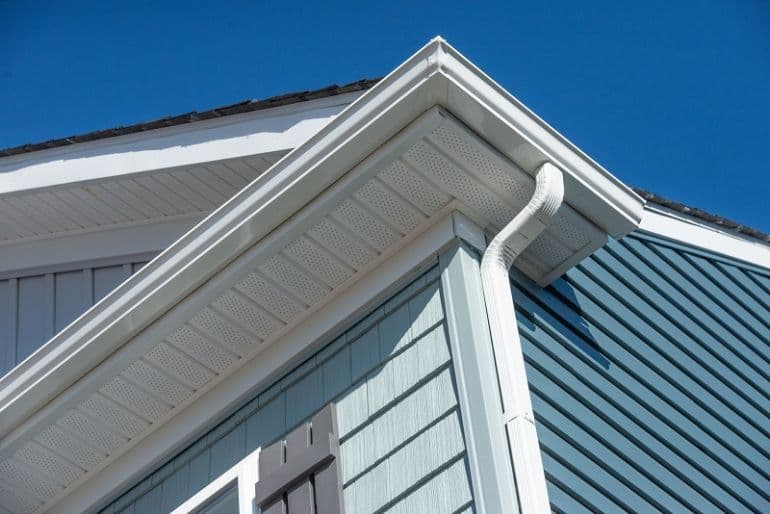
The most popular form of an intake vent is hands down, the soffit vent. This is either a continuous vent or an individual vent that runs underneath your eavestrough.
The most popular combination of intake and exhaust vents would be the ridge vent and soffit vents. When combined and built together, it's tough to beat the airflow and ventilation from these types of vents.
So to start, a soffit vent is installed directly underneath your gutters. If you go with a continuous soffit vent, it usually runs the whole length of your eavestrough and wraps around your entire home. This is ideal as it covers the most surface area and, therefore, allows the most air intake.
They're usually created from aluminium and have tiny holes throughout the panels. Since the holes are so small, you don't have to worry about anything alive or not getting into your home through them.
Continuous soffit vents come in various colours and textures to match your home and give you a perfect look.
Individual soffit vents are smaller, aluminium vents that are usually rectangular in size. They look similar to the vents on the inside of your home where the heat and AC come out.
They are usually spaced out under your eaves about 5-6 feet apart. They still work great, but with less surface area, they won't allow for as much air intake as a continuous design system.
Over Fascia Vents
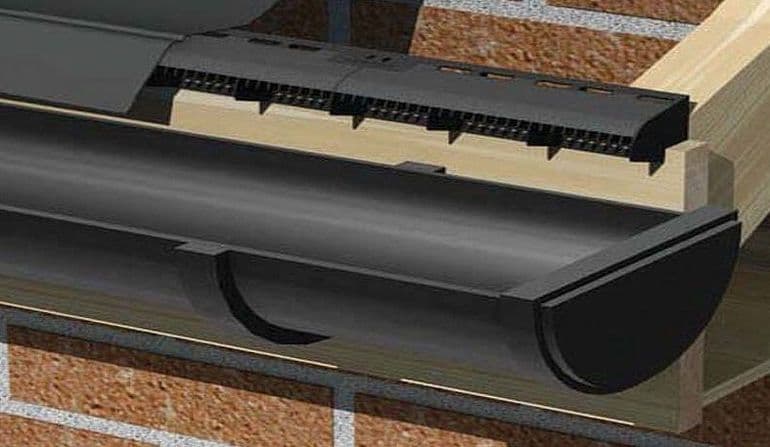
Also called fascia vents, these are a newer type of vent and are mostly used when you can't have large enough eavestroughs to have soffit vents installed. These vents are installed on top of your fascia board and gutter, right below the first row of shingles.
While soffit vents work with air rising up and from underneath, over fascia vents work from the top. When wind hits your roof, fascia vents take in the airflow.
You really only want to use these when you can't fit soffit vents.
Roof Ventilation: Schedule A Property Evaluation Now!
Our team is dedicated to helping homeowners in the Hamilton area get the best out of their roof ventilation. We've been at this for over 45 years and still going strong.
Ensure you follow proper attic ventilation tips by acquiring a roof ventilation assessment. Our professionals will help you pick the right roofing ventilation system that works best with your home and roof.
Many studies find energy cost savings with enhanced roof ventilation.
Contact us today, and let's talk about your roof!
Limited-Time Offer!
6 month no interest on all roofing, siding, gutters, window and door projects through December!
Flexible Financing Options
You Have a Budget, We Have a Payment Plan to Match It
Explore Financing Options Through Financeit
Trusted By the Biggest Names in the Business!


Contact Us
Mon - Fri: 7:00AM - 9:00PM
Saturday: 9:00AM - 5:00PM
Sunday: 9:00AM - 5:00PM